
Split: The Heart of Dalmatia
Explore Split, Croatia's vibrant coastal gem, where ancient history meets modern charm. Discover stunning beaches, rich culture, and a gateway to the beautiful Dalmatian islands.
Split, the second-largest city in Croatia, is a vibrant blend of ancient history and modern lifestyle. Nestled along the Adriatic coast, Split is renowned for its stunning beaches, rich cultural heritage, and lively atmosphere. The city is best known for the iconic Diocletian's Palace, a UNESCO World Heritage site that forms the heart of the Old Town. Wander through its narrow streets to discover hidden cafes, charming boutiques, and centuries-old architecture. Beyond the historic center, Split offers a plethora of activities for all types of travelers. The Riva, a bustling waterfront promenade, is perfect for a leisurely stroll or enjoying a coffee while watching the world go by. For nature enthusiasts, Marjan Hill provides panoramic views of the city and surrounding islands, as well as numerous trails for hiking and biking. The city's beaches, such as Bačvice and Kašjuni, are ideal for sunbathing, swimming, and water sports. Split also serves as a gateway to the stunning Dalmatian islands, including Hvar, Brač, and Vis. Ferries and catamarans depart regularly, making it easy to explore these idyllic destinations. The city's culinary scene is another highlight, with a wide range of restaurants offering fresh seafood, traditional Dalmatian dishes, and international cuisine. Whether you're a history buff, an adventure seeker, or a foodie, Split has something to offer everyone.
Local tips in Split
- Visit Diocletian's Palace early in the morning to avoid the crowds and have a more intimate experience.
- Take a walk up Marjan Hill for breathtaking views and a peaceful escape from the city bustle.
- Try the local delicacy, peka, a traditional dish of meat and vegetables slow-cooked under a bell-like dome.
- Use the local ferry services to explore nearby islands like Hvar and Brač for a day trip.
- Visit the Green Market (Pazar) near the Old Town to experience local flavors and buy fresh produce.
- Stay hydrated and wear comfortable shoes, especially when exploring the cobblestone streets of the Old Town.
Neighbourhoods in Split
Split: The Heart of Dalmatia
Split, the second-largest city in Croatia, is a vibrant blend of ancient history and modern lifestyle. Nestled along the Adriatic coast, Split is renowned for its stunning beaches, rich cultural heritage, and lively atmosphere. The city is best known for the iconic Diocletian's Palace, a UNESCO World Heritage site that forms the heart of the Old Town. Wander through its narrow streets to discover hidden cafes, charming boutiques, and centuries-old architecture. Beyond the historic center, Split offers a plethora of activities for all types of travelers. The Riva, a bustling waterfront promenade, is perfect for a leisurely stroll or enjoying a coffee while watching the world go by. For nature enthusiasts, Marjan Hill provides panoramic views of the city and surrounding islands, as well as numerous trails for hiking and biking. The city's beaches, such as Bačvice and Kašjuni, are ideal for sunbathing, swimming, and water sports. Split also serves as a gateway to the stunning Dalmatian islands, including Hvar, Brač, and Vis. Ferries and catamarans depart regularly, making it easy to explore these idyllic destinations. The city's culinary scene is another highlight, with a wide range of restaurants offering fresh seafood, traditional Dalmatian dishes, and international cuisine. Whether you're a history buff, an adventure seeker, or a foodie, Split has something to offer everyone.
When is the best time to go to Split?
Iconic landmarks you can’t miss
Diocletian's Palace
Discover the architectural splendor and vibrant culture of Diocletian's Palace, a UNESCO World Heritage Site in the heart of Split, Croatia.
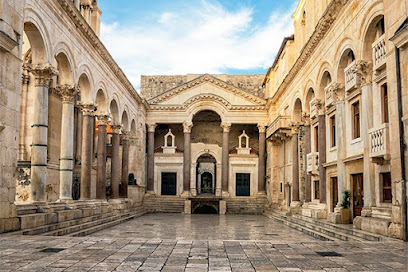
Forest Park Marjan
Discover the enchanting Forest Park Marjan in Split, where lush landscapes and historical charm create an unforgettable nature escape for every tourist.

Saint Domnius Cathedral
Explore the historic Saint Domnius Cathedral in Split, a UNESCO World Heritage Site celebrated for its stunning architecture and rich cultural significance.

Golden Gate
Explore the Golden Gate in Split, a stunning historical landmark that invites you into the heart of ancient Croatia.

Viewpoint to Marjan
Experience the stunning beauty of Split from the Marjan Viewpoint, where panoramic vistas and serene surroundings await every visitor.

Telegrin Peak
Discover the stunning views of Split and the Adriatic from Telegrin Peak, a must-visit observation deck for every traveler in Croatia.

Game of Thrones Museum
Explore the Game of Thrones Museum in Split, Croatia, where fans can relive the magic of Westeros through immersive exhibits and authentic memorabilia.

Froggyland
Explore the enchanting Froggyland museum in Split, Croatia, featuring over 500 unique frog figurines in entertaining and artistic displays.

Diocletian's Cellars
Explore the ancient Roman history of Split at Diocletian's Cellars, a captivating underground landmark steeped in architectural wonders and cultural significance.

Monument to Gregory of Nin
Discover the Monument to Gregory of Nin in Split, a stunning sculpture steeped in history and local tradition, perfect for cultural exploration.

Archaeological Museum in Split
Explore the rich history of Split at the Archaeological Museum, showcasing ancient artifacts from prehistoric to Roman times.

Jupiter's Temple
Discover the ancient wonders of Jupiter's Temple in Split, Croatia, a stunning testament to Roman architecture and history.

Marjan Hill Stairs
Explore Marjan Hill Stairs in Split, Croatia - a hiking paradise boasting stunning views, rich nature, and a glimpse into the region's cultural heritage.
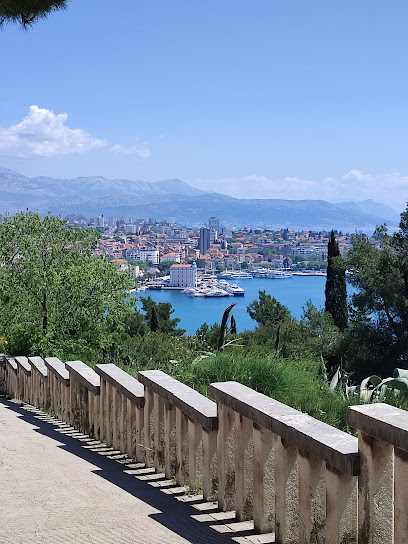
Old Town Hall
Explore the Old Town Hall in Split, a stunning historical landmark rich in culture and architectural beauty. Perfect for history lovers and curious travelers alike.

People's Square
Discover the vibrant heart of Split at People's Square, a historical landmark filled with culture, cafes, and captivating architecture.
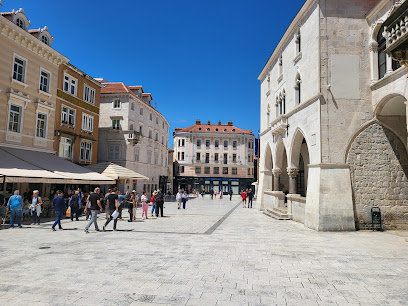
Unmissable attractions to see
Diocletian's Palace
Explore the grandeur of Diocletian's Palace, a UNESCO World Heritage site that blends rich history with vibrant local culture in the heart of Split, Croatia.

Golden Horn Beach
Experience the stunning beauty of Golden Horn Beach in Bol, Croatia, with its unique shape and crystal-clear waters, perfect for relaxation and adventure.

Split Riva
Experience the lively Riva Promenade in Split, where stunning sea views, vibrant culture, and delicious dining await travelers exploring Croatia.

Klis Fortress
Discover the awe-inspiring Klis Fortress, a cultural and historical landmark in Croatia that offers breathtaking views and rich history.

Poljud Stadium
Discover Poljud Stadium in Split, Croatia—an architectural marvel and the heart of local sports culture, home to the legendary Hajduk Split football team.
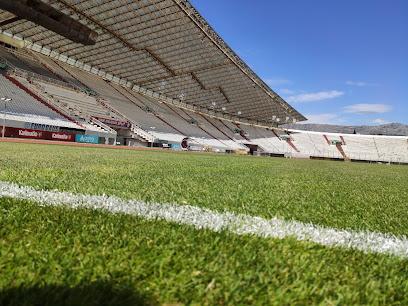
Trogir Old Town
Discover Trogir Old Town, a UNESCO World Heritage site, where medieval charm meets stunning coastal views in Croatia's enchanting landscape.

Saint Domnius Cathedral
Explore the historic Saint Domnius Cathedral in Split, Croatia, a stunning blend of Roman and Gothic architecture, rich in culture and history.

Kamerlengo Castle
Explore Kamerlengo Castle in Trogir, Croatia - a historical fortress offering stunning views, rich history, and vibrant cultural events.

Mirabela Fortress (Peovica)
Discover the breathtaking Mirabela Fortress in Omiš, where history and stunning views meet on the Croatian coast.

Out to Sea - Split Boat Party
Join the unforgettable Out to Sea boat party in Split and sail into the vibrant Adriatic waters for an exceptional day of fun, music, and stunning views.

Kasjuni Beach
Discover the serene beauty of Kasjuni Beach in Split, where golden sands meet the turquoise waters of the Adriatic Sea, perfect for relaxation and adventure.

Fortress of Petar Hektorović
Discover the Fortress of Petar Hektorović in Stari Grad, a stunning historical landmark showcasing Croatia's rich cultural heritage and beautiful architecture.
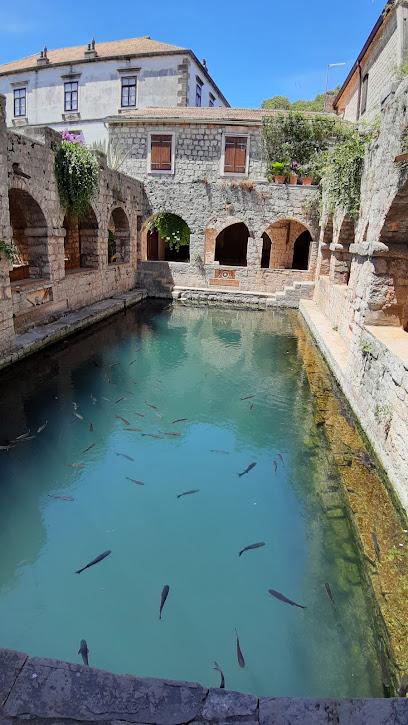
Green Market
Discover the heart of Split at the Green Market, where fresh produce and local culture create an unforgettable shopping experience.

Marina Kastela
Experience the charm of Marina Kastela in Kaštel Gomilica, a vibrant harbor with stunning views, delicious cuisine, and a lively atmosphere.

Kupalište Bene
Experience the vibrant atmosphere of Kupalište Bene, a stunning public bath in Split, where relaxation meets culture by the Adriatic Sea.

Essential places to dine
Bokeria Kitchen & Wine
Experience the vibrant flavors of Mediterranean cuisine at Bokeria Kitchen & Wine in Split - where every meal is a celebration.

Chops Grill - Steak & Seafood
Savor exquisite steak and seafood at Chops Grill in Split – where culinary excellence meets local charm.

Restaurant Bajamonti
Discover the culinary treasures of Split at Restaurant Bajamonti - where barbecue meets seafood in a vibrant atmosphere.

Sexy Cow
Discover unique flavors at Sexy Cow in Split - where delicious fast food meets local culinary creativity!
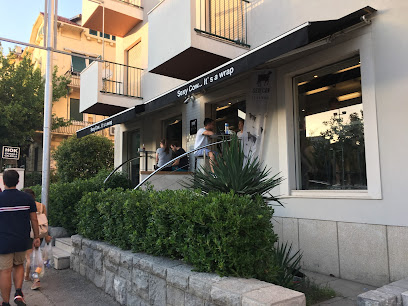
Corto Maltese Freestyle food
Experience innovative Croatian cuisine at Corto Maltese Freestyle Food in Split - where tradition meets creativity in every dish.
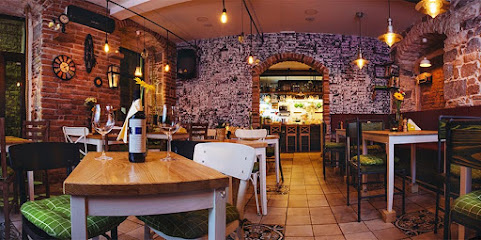
Dvor
Discover the exquisite flavors of Croatia at Dvor in Split - where stunning sea views meet culinary excellence.

Fig Split
Experience exceptional Mediterranean cuisine at Fig Split in the heart of Croatia's vibrant cityscape.

Šug Restaurant
Discover the essence of Croatian cuisine at Šug Restaurant in Split – where every meal is a celebration of local flavors and fine dining excellence.

Duje
Experience authentic Croatian cuisine at Duje, where exquisite meat and seafood dishes await in a charming setting.

Villa Spiza
Experience authentic Croatian cuisine at Villa Spiza in Split - where tradition meets taste in a cozy atmosphere.

Nevera Tavern
Discover Mediterranean delights at Nevera Tavern in Split - where fresh seafood meets authentic barbecue flavors in a cozy atmosphere.

Brasserie on 7
Experience exquisite flavors and stunning sea views at Brasserie on 7 in Split - your ultimate dining destination.

Konoba Laganini
Discover authentic Croatian cuisine at Konoba Laganini in Split – where tradition meets contemporary dining in a cozy setting.
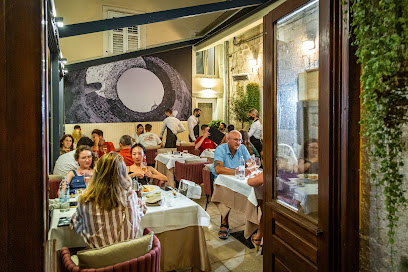
Portofino
Experience authentic Croatian cuisine at Portofino – where fresh seafood meets stunning coastal views.

To Je Tako Mexican Restaurant
Experience authentic Mexican cuisine at To Je Tako in Split – where vibrant flavors meet warm hospitality.

Markets, malls and hidden boutiques
Mall of Split
Explore the Mall of Split, a shopper's paradise featuring diverse brands, delectable dining, and exciting entertainment options in the heart of Croatia.

City Center one Split
Discover the vibrant City Center One Split, where shopping meets culinary delights in a modern and inviting atmosphere.

Joker Mall
Discover the lively Joker Mall in Split, Croatia, your go-to destination for shopping, dining, and entertainment in a vibrant setting.

Green Market
Discover the rich flavors and vibrant culture of Split at the Green Market, where local produce meets unique artisan crafts.

Garica CBD Shop Split
Explore Garica CBD Shop in Split for a unique selection of premium CBD products, blending quality and local culture.

Second Hand Shop
Unearth unique fashion finds at Split's Second Hand Shop, where sustainability meets style in a treasure trove of used clothing.

aROMA gelato experience Boutique Split
Discover the delightful world of artisanal gelato at aROMA Gelato Experience in Split, where every scoop is crafted with love and fresh ingredients.

Top Shop
Explore Top Shop in Split for unique local treasures, delicious snacks, and an authentic Croatian shopping experience.
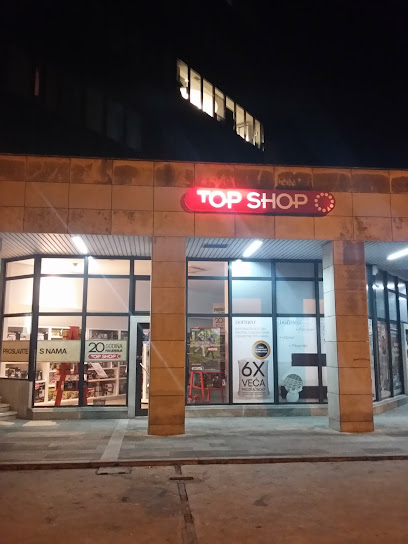
Little Beer Shop (Mali dućan - Matejuška)
Explore the best of local and international craft beers at Little Beer Shop, a charming hideaway in Split's beautiful waterfront.

Vandal shop SPLIT
Explore the trendy Vandal Shop in Split, Croatia, for a unique shopping experience filled with contemporary fashion and accessories.

Jam Jam
Discover unique home goods at Jam Jam in Split, Croatia – where modern design meets traditional craftsmanship for every home.

BREAK TIME Handmade Jewellery & Souvenirs
Explore exquisite handcrafted jewelry and unique souvenirs at BREAK TIME in Split, a treasure trove for tourists seeking authentic Croatian gifts.

Filigran Split
Explore the intricate beauty of Croatian filigree at Filigran Split, where craftsmanship meets creativity in stunning jewelry designs.

EIE VINTAGE
Explore EIE Vintage in Split for unique, eco-friendly clothing that captures the essence of timeless fashion and sustainable style.

ForGas Butiga
Discover the artistic heartbeat of Split at ForGas Butiga, where local creativity meets unique souvenirs in a vibrant gallery setting.

Essential bars & hidden hideouts
Fabrique Pub
Discover the vibrant atmosphere of Fabrique Pub, a unique restaurant and pub in Split offering great food, drinks, and unforgettable experiences.
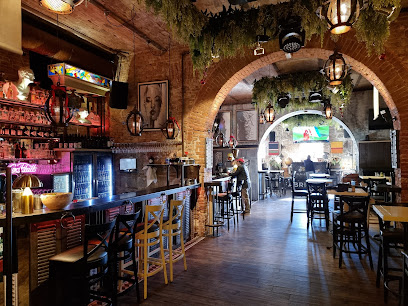
The Daltonist
Experience the vibrant culinary scene at The Daltonist, a stylish gastropub in Split offering gourmet brunch, tapas, and innovative cocktails.

Charlie's Bar
Discover the vibrant atmosphere of Charlie's Bar in Split, where locals and tourists unite for unforgettable nights filled with great drinks and lively entertainment.

Marvlvs Library Jazz Bar
Discover the rhythm of Split at Marvlvs Library Jazz Bar, where live jazz meets exquisite wines in a cozy, inviting atmosphere.

Paradiso cocktail bar
Discover the vibrant nightlife of Split at Paradiso Cocktail Bar, where expertly crafted cocktails and a lively atmosphere await every visitor.

Jadran Beach Bar
Experience the vibrant atmosphere and stunning sea views at Jadran Beach Bar, a premier cocktail bar in Split's coastal paradise.

Antique Bar
Experience the vibrant atmosphere of Antique Bar in Split, where the charm of a coffee shop meets the excitement of a bar, perfect for every occasion.

Cool Garden
Discover Cool Garden in Split, where a vast selection of craft beers and gins awaits in a vibrant, social atmosphere perfect for relaxation.

Pun Kufer Cocktail Bar
Discover the vibrant atmosphere and unique cocktails at Pun Kufer Cocktail Bar, a must-visit nightlife destination in Split, Croatia.

BAR BASKET
Experience the vibrant atmosphere and delightful drinks at Bar Basket in Split, Croatia – a must-visit for every traveler!

Crew Bar Split
Discover the lively atmosphere of Crew Bar in Split, where refreshing drinks meet a vibrant nightlife experience.

Bar Sistema
Discover the vibrant cocktail culture at Bar Sistema, Split's premier cocktail bar offering unique flavors and an unforgettable atmosphere.

Leopold's Delicatessen Bar
Discover the vibrant flavors of Croatia at Leopold's Delicatessen Bar, a perfect blend of tradition and modernity in the heart of Split.
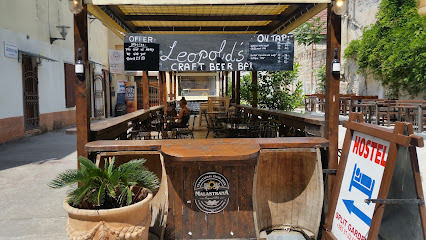
Caffe bar La Linea
Experience the charm of Split at Caffe Bar La Linea, where delightful drinks and a cozy atmosphere await every traveler.

ShotGun Shooters Bar
Dive into the energetic nightlife of Split at ShotGun Shooters Bar, where cocktails and camaraderie meet in a lively atmosphere.

Travel experiences inspired by this city
Explore more travel diariesLocal Phrases
-
- HelloBok
[Bohk] - GoodbyeDoviđenja
[Doh-vee-jen-ya] - YesDa
[Dah] - NoNe
[Neh] - Please/You're welcomeMolim
[Moh-leem] - Thank youHvala
[Hvah-lah] - Excuse me/SorryOprostite
[Oh-pros-tee-teh] - How are you?Kako si?
[Kah-koh see?] - Fine. And you?Dobro. A ti?
[Doh-broh. Ah tee?] - Do you speak English?Govorite li engleski?
[Goh-voh-ree-teh lee eng-lehs-kee?] - I don't understandNe razumijem
[Neh rah-zoo-mee-yem]
- HelloBok
-
- I'd like to see the menu, pleaseMolio bih meni, molim
[Moh-lee-oh bee meh-nee, moh-leem] - I don't eat meatNe jedem meso
[Neh yeh-dem meh-so] - Cheers!Živjeli!
[Zhee-vye-lee] - I would like to pay, pleaseŽelim platiti, molim
[Zheh-leem plah-tee-tee, moh-leem]
- I'd like to see the menu, pleaseMolio bih meni, molim
-
- Help!Pomoć!
[Poh-moh-ch] - Go away!Idi odavde!
[Ee-dee oh-dahv-deh] - Call the Police!Pozovite policiju!
[Poh-zoh-vee-teh po-lee-tsee-yoo] - Call a doctor!Pozovite doktora!
[Poh-zoh-vee-teh dohk-toh-rah] - I'm lostIzgubljen sam
[Eez-goob-lyen sahm] - I'm illBolestan sam
[Boh-less-tahn sahm]
- Help!Pomoć!
-
- I'd like to buy...Želim kupiti...
[Zheh-leem koo-pee-tee] - I'm just lookingSamo gledam
[Sah-moh gleh-dahm] - How much is it?Koliko košta?
[Koh-lee-koh koh-shta?] - That's too expensiveTo je preskupo
[Toh yeh prehs-koo-poh] - Can you lower the price?Možete li spustiti cijenu?
[Moh-zheh-teh lee spoos-tee-tee tsee-yeh-noo?]
- I'd like to buy...Želim kupiti...
-
- What time is it?Koliko je sati?
[Koh-lee-koh yeh sah-tee?] - It's one o'clockJedan je sat
[Yeh-dahn yeh saht] - Half past (10)Pola (deset)
[Poh-lah (deh-set)] - MorningJutro
[Yoo-troh] - AfternoonPopodne
[Poh-pod-neh] - EveningVečer
[Veh-cher] - YesterdayJučer
[Yoo-cher] - TodayDanas
[Dah-nahs] - TomorrowSutra
[Soo-trah] - 1Jedan
[Yeh-dahn] - 2Dva
[Dvah] - 3Tri
[Tree] - 4Četiri
[Cheh-tee-ree] - 5Pet
[Peh-t] - 6Šest
[Shehst] - 7Sedam
[Seh-dahm] - 8Osam
[Oh-sahm] - 9Devet
[Deh-vet] - 10Deset
[Deh-set]
- What time is it?Koliko je sati?
-
- Where's a/the...?Gdje je...
[Gdyeh yeh] - What's the address?Koja je adresa?
[Koh-yah yeh ah-deh-sah] - Can you show me (on the map)?Možete li mi pokazati (na karti)?
[Moh-zheh-teh lee mee poh-kah-zah-tee (nah kahr-tee)] - When's the next (bus)?Kada je sljedeći (autobus)?
[Kah-dah yeh sleh-deh-chee (ow-toh-boos)] - A ticket (to ....)Jednu kartu (do ....)
[Yehd-noo kahr-too (doh)]
- Where's a/the...?Gdje je...
History of Split
-
Split, originally named Aspalathos, was founded as a Greek colony in the 3rd or 2nd century BC. This early settlement laid the groundwork for the vibrant city that would develop over the millennia.
-
One of Split's most iconic landmarks, Diocletian's Palace, was constructed in the early 4th century AD. Roman Emperor Diocletian had it built as his retirement residence, and it covers an area of 30,000 square meters. Today, it's a UNESCO World Heritage site and forms the historic center of the city.
-
During the early medieval period, Split evolved from a Roman imperial residence to a bustling medieval town. The city was part of the Byzantine Empire and later came under the control of the Croatian Kingdom. The Cathedral of Saint Domnius, originally Diocletian's mausoleum, was consecrated in the 7th century and remains a significant historical site.
-
In the 15th century, Split fell under the control of the Venetian Republic. The Venetians fortified the city with walls and towers to protect it from Ottoman incursions. This period saw significant architectural and cultural development, blending Venetian and local styles.
-
Following the fall of the Venetian Republic in 1797, Split became part of the Habsburg Monarchy. Under Austro-Hungarian rule, Split experienced industrial and urban growth. The construction of new infrastructure, such as the Riva promenade, transformed the city's landscape.
-
Split played a crucial role during World War II as a center of resistance against Fascist and Nazi forces. After the war, Split became part of Socialist Yugoslavia. The city expanded rapidly, with new residential and industrial areas developing around the historic core.
-
Since Croatia's independence in 1991, Split has become one of the country's major cultural and economic hubs. The city is renowned for its blend of ancient history and modern vibrancy, attracting millions of tourists each year to its historic sites, beautiful coastline, and lively festivals.
Split Essentials
-
Split is accessible through Split Airport (SPU), located about 24 kilometers from the city center. The airport serves numerous international and domestic flights. From the airport, you can take a shuttle bus, taxi, or rent a car to reach the city. Alternatively, Split is well-connected by ferry to several Adriatic destinations, including Ancona and Pescara in Italy. The city is also accessible by train and bus from major Croatian cities like Zagreb and Dubrovnik.
-
Split offers various transportation options, including public buses, taxis, and bike rentals. The public bus service, operated by Promet Split, covers the entire city and surrounding areas. Taxis are readily available but can be more expensive. For a more scenic and leisurely option, consider renting a bike to explore the city. The city center is quite walkable, especially around the historic Diocletian's Palace. Car rentals are also available for those looking to explore the Dalmatian coast.
-
The official currency in Croatia is the Croatian Kuna (HRK). Credit and debit cards are widely accepted in hotels, restaurants, and shops. However, it's advisable to carry some cash for smaller establishments and markets. ATMs are available throughout the city, and currency exchange offices can be found in the city center and at the airport. Tipping is not mandatory but appreciated; rounding up the bill or leaving a 10% tip is customary.
-
Split is generally a safe city for tourists. Petty crimes like pickpocketing can occur in crowded areas, especially around the Riva promenade and Diocletian's Palace. Exercise standard precautions: keep your belongings secure, avoid poorly lit areas at night, and be cautious when withdrawing money from ATMs. There are no specific high-crime areas targeting tourists, but staying vigilant will ensure a safe visit.
-
In case of emergency, dial 112 for immediate assistance. This number can connect you to police, fire, and medical services. Split has several hospitals and clinics, including KBC Split, the largest medical facility in the city. Pharmacies are plentiful and can provide over-the-counter medications for minor health issues. It is highly recommended to have travel insurance that covers medical emergencies.
-
Fashion: Do dress comfortably and modestly. Swimwear is appropriate at the beach but not in the city center. Religion: Do respect religious sites by dressing modestly and being quiet. Public Transport: Do validate your bus ticket upon boarding. Don't forget to offer your seat to elderly passengers. Greetings: Do greet locals with a friendly 'Dobar dan' (Good day). A simple handshake is also appropriate. Eating & Drinking: Do try the local cuisine, including seafood and Dalmatian specialties. Don't forget to say 'Hvala' (Thank you) when someone serves you.
-
To experience Split like a local, visit the Green Market (Pazar) near Diocletian's Palace for fresh produce and local products. Enjoy a coffee at one of the many cafes along the Riva promenade, a favorite pastime for locals. Attend a 'klapa' performance, a traditional form of a cappella singing unique to the Dalmatian coast. For a quieter beach experience, head to Bene Beach, a bit further from the city center but favored by locals.
Trending Landmark in Split
Nearby Cities to Split
-
Things To Do in Trogir
-
Things To Do in Hvar
-
Things To Do in Makarska
-
Things To Do in Mostar
-
Things To Do in Jajce
-
Things To Do in Zadar
-
Things To Do in Zenica
-
Things To Do in Bihac
-
Things To Do in Banja Luka
-
Things To Do in Sarajevo
-
Things To Do in Dubrovnik
-
Things To Do in Trebinje
-
Things To Do in Herceg Novi
-
Things To Do in Tuzla
-
Things To Do in Perast




















